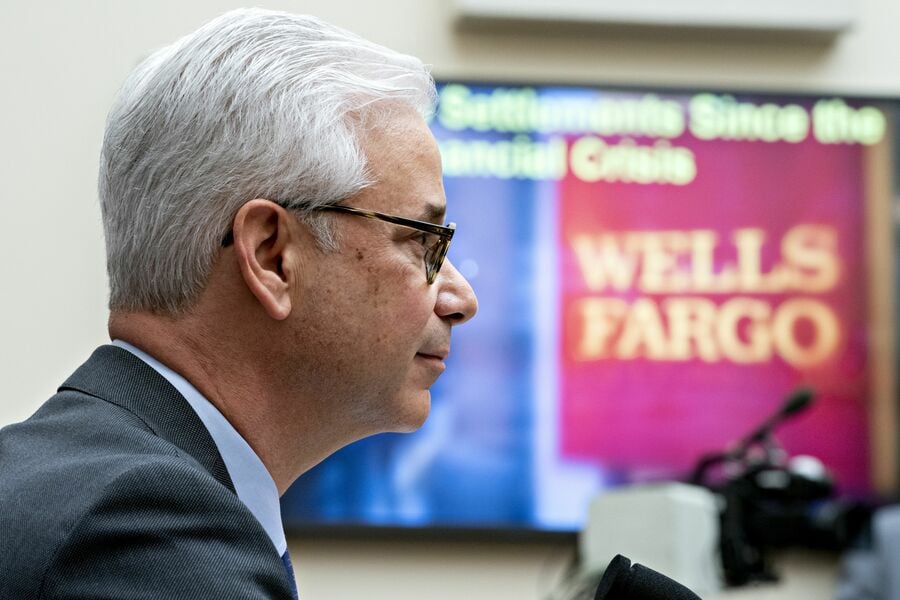

Wells Fargo Chief Executive Charlie Scharf said the Federal Reserve’s asset cap isn’t doing much to limit his bank’s activities at the moment but he expects it will in the future.
“The asset cap today is not a material limitation just because of where the trends in deposits and where loan demand is,” Scharf said Tuesday at the Goldman Sachs US Financial Services Conference. “It has been and it will be again.”
The fourth-largest U.S. bank has been hobbled by a Fed order limiting it to its size at the end of 2017 for more than five years — longer than Scharf’s tenure. The punishment is tied to a series of scandals at the bank that began with fake accounts seven years ago. Wells Fargo executives privately expect the restriction to stretch into 2025, Bloomberg News reported last month, citing people familiar with the matter.
In the wide-ranging conversation, Scharf also said the economy is stronger than expected. Consumer spending is consistent and, as for businesses, “with all the talk of rising rates and potential downturns, they’re positioned extremely well,” he said.
The San Francisco-based company expects to see losses in its portfolio of office loans in the fourth quarter and next year, Scharf said, adding that Wells Fargo is “conservatively reserved.”

Blue Anchor Capital Management and Pickett also purchased “highly aggressive and volatile” securities, according to the order.

Reshuffle provides strong indication of where the regulator's priorities now lie.

Goldman Sachs Asset Management report reveals sharpened focus on annuities.

Ahead of Father's Day, InvestmentNews speaks with Andrew Crowell.

Cerulli research finds nearly two-thirds of active retirement plan participants are unadvised, opening a potential engagement opportunity.
Barely a decade old, registered index-linked annuities have quickly surged in popularity, thanks to their unique blend of protection and growth potential—an appealing option for investors looking to chart a steadier course through today’s choppy market waters, says Myles Lambert, Brighthouse Financial.
How intelliflo aims to solve advisors' top tech headaches—without sacrificing the personal touch clients crave
